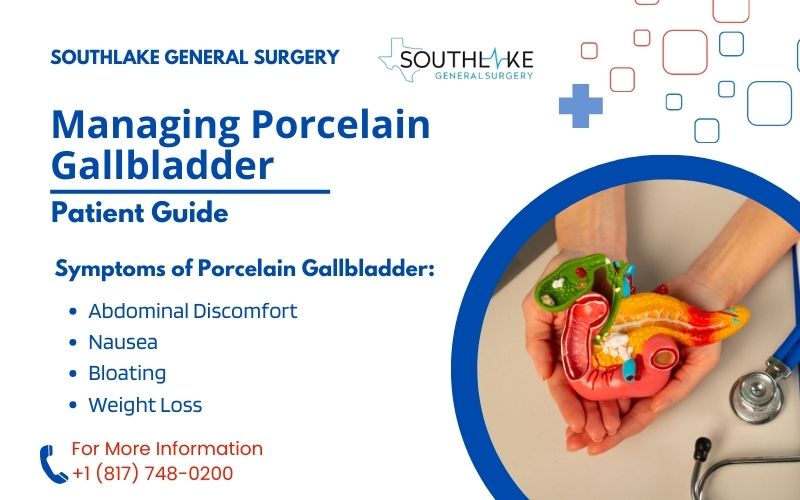A porcelain gallbladder, a rare condition characterized by the calcification of the gallbladder wall, poses significant health risks if left untreated. Understanding the implications of this condition is crucial for early detection and prompt intervention.
Recent studies have shed light on the correlation between porcelain gallbladder and an increased risk of gallbladder cancer, emphasizing the importance of timely diagnosis and treatment. Surgical approaches, such as laparoscopic cholecystectomy, are often recommended to mitigate the risks associated with this condition.
With insights into its causes, symptoms, and treatment options, individuals can take proactive steps toward managing their health effectively. Regular health check-ups and lifestyle modifications play a pivotal role in preventing complications related to the porcelain gallbladder and understanding its natural history.
Understanding Porcelain Gallbladder
Porcelain gallbladder, also known as calcified gallbladder or PGB refers to a condition where the gallbladder wall becomes calcified, leading to a brittle consistency. In some cases, this calcification can be a result of chronic inflammation, often linked to gallstones or other gallbladder diseases.
Understanding this condition is crucial due to its association with a higher risk of gallbladder cancer. Recent reports have highlighted the importance of early detection and treatment to prevent potentially serious complications.
Imaging techniques, such as CT scans and ultrasounds, play a significant role in diagnosing this condition. Surgical interventions like laparoscopic cholecystectomy are often recommended in cases where the risk of malignancy is present, emphasizing the need for prompt medical attention.
What is a Porcelain Gallbladder?
Porcelain gallbladder is a rare condition where the gallbladder wall becomes calcified. This can lead to an increased risk of gallbladder cancer. It is essential to comprehend this condition for timely detection and proper treatment.
The Importance of Early Detection
Identifying the porcelain gallbladder early is crucial, as it can help prevent serious complications like gallbladder cancer. The early detection of porcelain gallbladder is key to initiating timely treatment to avoid the progression of the condition.
Recent reports emphasize the significance of identifying the calcification of the gallbladder in its early stages. Individuals with risk factors such as chronic cholecystitis should be particularly vigilant and undergo regular screenings for gallbladder abnormalities.
Early detection allows for prompt intervention, reducing the risk of malignant degeneration and potential complications. Therefore, awareness of the signs and symptoms of porcelain gallbladder is essential for ensuring timely diagnosis and appropriate management.
Causes and Risk Factors
Porcelain gallbladder, characterized by calcification of the gallbladder wall, has intricate causes and risk factors. The major contributor to this condition is the presence of gallstones, especially cholesterol stones.
Additionally, chronic cholecystitis, a result of chronic inflammation, can lead to the calcification of the gallbladder. Other risk factors include emphysematous cholecystitis and dystrophic calcification.
Recent studies have shown a potential causal relationship between calcium deposits and the development of this rare condition.
Understanding these factors is crucial for early detection and appropriate management, including early cholecystectomy. Timely intervention, such as laparoscopic cholecystectomy, is recommended to prevent complications like gallbladder cancer and malignant degeneration of the lumen.
How Gallstones Contribute to Porcelain Gallbladder?
Gallstones play a significant role in the development of a porcelain gallbladder. The chronic presence of gallstones within the gallbladder results in inflammation, leading to the calcification of the gallbladder wall.
The calcification process occurs over time, causing the once flexible gallbladder to become brittle due to calcium deposits. This transformation ultimately gives the gallbladder a porcelain-like appearance in imaging studies.
Research indicates a causal relationship between long-standing gallstones and the formation of a porcelain gallbladder, with a higher frequency of gallstones found in patients with a porcelain gallbladder compared to the general population.
Therefore, individuals with a history of gallstones are at a higher risk of developing this unusual condition. Early detection and management of gallstones are crucial in preventing the progression to a porcelain gallbladder.
Other Risk Factors Leading to Porcelain Gallbladder
Porcelain gallbladder can be influenced by various factors beyond gallstones. Chronic cholecystitis, a condition characterized by long-term inflammation, poses a significant risk.
Moreover, the presence of emphysematous cholecystitis, where gas accumulates within the gallbladder, can contribute to the development of a porcelain gallbladder. Dystrophic calcification, a process where calcium deposits form in damaged tissues, is another risk factor to consider.
Recent studies also suggest a potential link between gallbladder sludge and the calcification of the gallbladder wall, raising concerns about its impact on gallbladder health. Understanding these additional risk factors is crucial for comprehensive management and prevention strategies for porcelain gallbladder.
Symptoms and Diagnosis
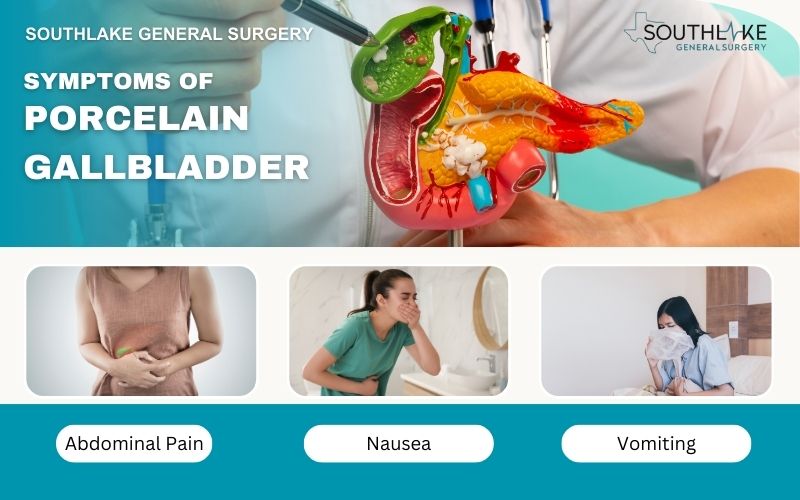
Symptoms of porcelain gallbladder are often absent, making early diagnosis challenging. However, if present, symptoms may include abdominal pain, nausea, and vomiting.
In some cases, patients may experience weight loss or jaundice. Diagnostic tests like CT scans and ultrasounds are crucial for accurate identification. Calcifications seen in imaging studies signify advanced disease.
If a porcelain gallbladder is suspected, prompt medical evaluation is essential to rule out potential complications. Given the lack of specific symptoms, regular health check-ups and imaging screenings play a crucial role in the early detection of this condition.
Early diagnosis can significantly impact treatment outcomes and improve patient prognosis.
Common Symptoms of Porcelain Gallbladder
Brittle consistency of the gallbladder wall due to calcification often leads to the absence of symptoms in patients with a porcelain gallbladder.
However, when symptoms are present, they can mimic those of gallbladder disease. Common symptoms may include vague abdominal discomfort, nausea, and bloating in the right upper quadrant of the abdomen.
In severe cases, patients might experience weight loss and signs of chronic inflammation. Diagnostic imaging techniques such as ultrasound and CT scans play a vital role in identifying these symptoms.
Early detection through these methods is crucial in managing the condition effectively and preventing potential complications like gallbladder cancer. Regular health check-ups are recommended to monitor any changes in symptomatology.
Diagnostic Tests and Imaging Techniques
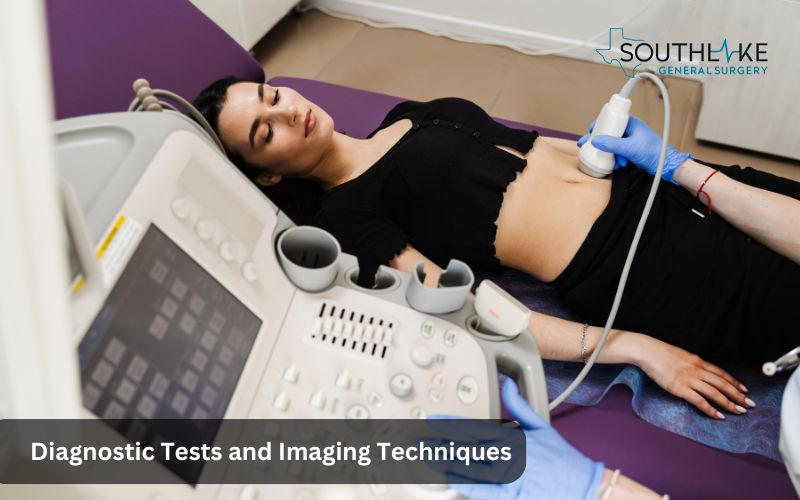
When diagnosing porcelain gallbladder, healthcare providers may rely on various diagnostic tests and imaging techniques to confirm the condition.
Commonly used methods include ultrasounds, CT scans, and plain abdominal radiographs. These tools allow specialists to visualize the gallbladder and detect any calcifications or abnormalities in the gallbladder wall indicative of a porcelain gallbladder.
Additionally, more advanced imaging techniques, like MRI scans and radiography, may provide detailed insights into the extent of calcification and the overall health of the gallbladder.
Precise diagnosis through these methods is crucial for determining the appropriate treatment plan and ensuring the best possible outcome for individuals with porcelain gallbladder.
Treatment Options for Porcelain Gallbladder
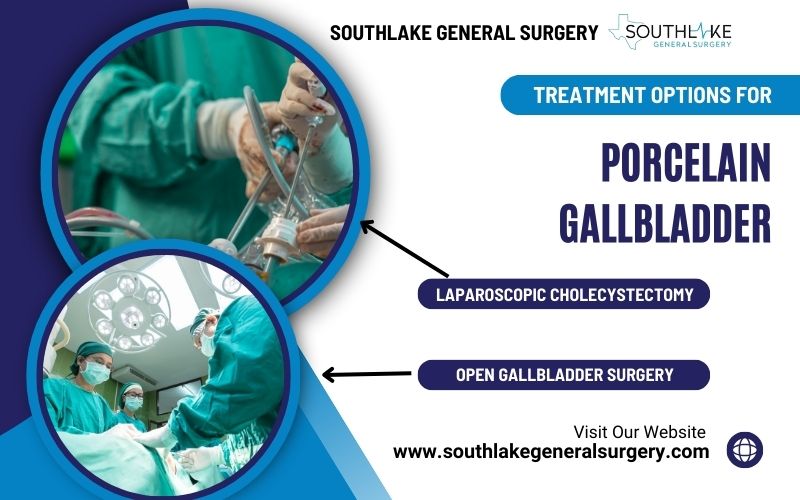
Surgical treatment for porcelain gallbladder typically involves cholecystectomy, the removal of the gallbladder. This procedure is commonly done laparoscopically, offering a less invasive approach with quicker recovery times.
Non-surgical management strategies may be considered for patients who are not suitable candidates for surgery or prefer non-invasive options. These strategies often focus on symptom management and lifestyle modifications to prevent complications.
Individuals with porcelain gallbladder need to consult with a healthcare professional to determine the most appropriate treatment plan based on their specific case. Understanding the available treatment options and their potential outcomes is crucial in managing porcelain gallbladder effectively.
Surgical Treatment: Cholecystectomy
Cholecystectomy is the primary surgical treatment for porcelain gallbladder in the United States. This procedure involves the removal of the gallbladder, usually due to complications like gallstones, chronic inflammation, or the increased risk of developing gallbladder cancer.
A laparoscopic gallbladder surgery, compared to open cholecystectomy, is commonly preferred for its minimally invasive nature and faster recovery times.
Studies indicate that patients undergoing cholecystectomy experience relief from symptoms and a reduced risk of complications associated with porcelain gallbladder. Surgical intervention aims to prevent potential malignancy and alleviate symptoms caused by the calcification of the gallbladder wall.
The mean age of patients undergoing cholecystectomy for porcelain gallbladder is 58.6 years, with a range of 19–94 years. Individuals with porcelain gallbladder need to consult a healthcare professional for appropriate treatment recommendations.
Non-Surgical Management Strategies
For individuals with porcelain gallbladder who are not suitable candidates for surgery, non-surgical management strategies play a crucial role in symptom control and disease management.
Dietary modifications aimed at reducing fat intake can help alleviate symptoms associated with gallbladder disease. Additionally, maintaining a healthy weight through proper nutrition and regular physical activity can further aid in managing the condition.
Some patients may benefit from medications to dissolve gallstones or alleviate pain. It’s essential to work closely with healthcare providers to develop a comprehensive non-surgical management plan tailored to individual needs and health conditions.
Monitoring symptoms and adapting the management strategy as needed are key aspects of long-term care.
Recovery and Post-Operative Care

After undergoing a cholecystectomy for a porcelain gallbladder, a crucial aspect is the recovery and post-operative care. Following surgery, patients can typically resume their normal activities within a week. Physical therapy may aid in a quicker recovery.
It’s essential to adhere to any prescribed pain management regimen and follow dietary recommendations to prevent discomfort. Monitoring for signs of infection or complications is paramount during the recovery period.
Patients should contact their healthcare provider if they experience persistent pain, fever, or unusual symptoms. Embracing a gradual return to regular activities is advised, with close attention to any post-operative guidelines provided by the medical team.
What to Expect After Gallbladder Removal Surgery
After gallbladder removal surgery, patients can expect a period of recovery. Initially, some may experience mild pain and discomfort, which can be managed with prescribed medication. It’s normal to feel tired and have a reduced appetite for a few days post-surgery.
Gradually, individuals can resume their regular activities, but heavy lifting should be avoided for a few weeks. Changes in bowel habits may occur but usually normalize over time. A follow-up appointment will be scheduled to monitor progress and address any concerns.
Adhering to dietary recommendations, staying hydrated, and slowly increasing physical activity are crucial aspects of a smooth recovery process.
Diet and Lifestyle Adjustments for Recovery

After undergoing gallbladder removal surgery, incorporating dietary and lifestyle modifications is crucial for a smooth recovery. Focus on a diet rich in fiber, fruits, vegetables, and lean proteins to aid digestion and prevent complications.
Avoid high-fat and spicy foods that may trigger digestive issues. Gradually introduce physical activity, such as walking or light exercises, to regain strength and promote overall well-being. Hydration is key, so ensure adequate water intake daily.
Listen to your body’s signals and gradually resume normal activities while avoiding strenuous tasks. Consult your healthcare provider for personalized advice on post-operative care and any necessary adjustments for your specific recovery journey.
Complications and Risks of Untreated Porcelain Gallbladder
The complications and risks of untreated porcelain gallbladder include an increased likelihood of developing gallbladder cancer due to the chronic inflammatory state.
Research has shown a potential link between calcification of the gallbladder and the malignant degeneration of cells. Without early intervention, there is a higher risk of gallbladder carcinoma, necessitating more aggressive treatment measures.
The brittle consistency of the gallbladder wall in porcelain gallbladder increases the chances of complications such as emphysematous cholecystitis or dystrophic calcification.
Ignoring symptoms can lead to further chronic inflammation, potentially causing issues like bile duct obstruction or gallbladder wall malignancy. Timely diagnosis and treatment can help prevent these severe outcomes.
Risk of Gallbladder Cancer
Porcelain gallbladder poses a significant concern due to the potential risk of gallbladder cancer. The calcification of the gallbladder, a characteristic feature of this condition, can sometimes lead to malignancy.
Recent reports have shown that the risk of developing gallbladder cancer from gallbladder calcification, also known as the incidence of GBC, is much lower than previously believed, emphasizing the importance of early detection and prompt treatment.
Patients with porcelain gallbladder should be vigilant about any new symptoms or changes in their health, as close monitoring and intervention can help mitigate the risk of gallbladder cancer.
Understanding the potential complications, such as malignant degeneration, underscores the importance of proactive management and regular follow-ups to safeguard against adverse outcomes.
Other Potential Complications
Potential complications associated with porcelain gallbladder extend beyond the risk of gallbladder cancer.
- Emphysematous cholecystitis, characterized by gas-forming bacteria in the gallbladder wall, is a rare but serious complication.
- Dystrophic calcification may lead to the brittleness of the gallbladder wall, increasing the risk of perforation during surgical interventions.
- Chronic inflammation associated with porcelain gallbladder can also result in other issues such as bile duct obstruction and sludge formation.
These complications highlight the importance of timely diagnosis and appropriate management strategies to prevent further health implications. In cases where complications arise, a multidisciplinary approach involving radiology, pathology, and surgical expertise may be necessary for optimal patient outcomes.
Preventative Measures
To prevent porcelain gallbladder complications, certain lifestyle adjustments are key. Maintaining a healthy weight and following a balanced diet can reduce the risk of gallbladder disease. Regular physical activity aids in overall gallbladder health.
Additionally, staying hydrated is crucial for bile production and preventing gallstones. Annual health check-ups can detect any potential issues early on, facilitating timely intervention. Monitoring cholesterol intake and opting for a low-fat diet may also lower the risk of developing gallstones.
These preventative measures can play a significant role in safeguarding against the progression of the porcelain gallbladder to more severe conditions.
Lifestyle Changes to Prevent Gallbladder Problems

To prevent gallbladder problems, implementing lifestyle changes is crucial. Maintaining a healthy weight through proper diet and regular exercise can significantly lower the risk of gallbladder issues. Including fiber-rich foods and staying hydrated helps with bile function and overall gallbladder health.
Avoiding rapid weight loss methods and adopting a balanced approach to weight management is advisable. Limiting the consumption of high-fat and cholesterol-laden foods is essential to prevent the formation of gallstones.
Additionally, regular physical activity promotes overall well-being and aids in the prevention of gallbladder disease. Making these lifestyle modifications can have a positive impact on gallbladder health and reduce the likelihood of developing complications.
Importance of Regular Health Check-Ups
Regular health check-ups play a vital role in managing porcelain gallbladder and other potential complications effectively. These routine assessments allow for the early detection of any changes in the gallbladder wall, including signs of gallbladder cancer or calcification.
Timely check-ups help in monitoring the condition, assessing the risk factors, and implementing necessary preventive measures. Through imaging techniques like CT scans and ultrasound, healthcare providers can identify any abnormalities or calcifications that may indicate a need for further evaluation or intervention.
By staying proactive with regular health check-ups, individuals can address any gallbladder issues promptly, enabling better management and potential prevention of severe complications.
Life After Gallbladder Removal
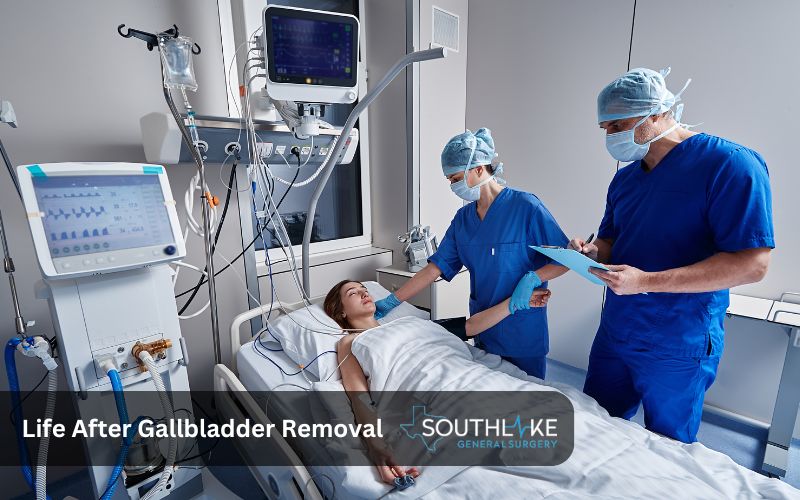
After gallbladder removal, individuals can lead a normal life with minor adjustments. Patients may experience changes in digestion, particularly with fatty foods. It’s advisable to follow a low-fat diet to aid digestion.
Regular physical activity can also help manage weight and promote overall well-being. Some people might have looser stools post-surgery, but this often stabilizes over time.
Discussing concerns with healthcare providers is essential for tailored post-operative care. Complications are rare, but if persistent issues arise, medical advice should be sought promptly.
Overall, life after gallbladder removal can be fulfilling, with most individuals resuming their regular activities with minimal disruption.
Challenges and How to Overcome Them
Navigating life after gallbladder removal surgery may present some challenges. Common issues include adjusting to dietary changes, potential digestive issues, and occasional weight fluctuations.
Adhering to a low-fat diet and maintaining a healthy lifestyle can aid in overcoming these challenges. Regular physical activity and monitoring food intake are crucial.
Additionally, consulting a healthcare provider for personalized advice can be beneficial. It’s essential to stay informed about potential complications and promptly address any concerns.
By proactively managing these challenges, individuals can ensure a smoother recovery process and maintain their overall well-being. Remember, each person’s journey is unique, so patience and perseverance are key to overcoming these obstacles.
A Note From Southlake General Surgery

At Southlake General Surgery, we emphasize the significance of early detection in managing porcelain gallbladder cases. Recent studies highlight the association between calcification of the gallbladder and a higher risk of gallbladder cancer.
Our team recommends prompt evaluation upon any suspicion of gallbladder disease to mitigate potential risks. We specialize in laparoscopic cholecystectomy, a minimally invasive and effective procedure for porcelain gallbladder treatment.
Understanding the pathology and incidence of gallbladder carcinoma is crucial for tailored patient care. Trust our expertise for personalized treatment recommendations and comprehensive post-operative care, ensuring optimal recovery and long-term health. Partner with us for exceptional surgical solutions and compassionate healthcare support.
Conclusion
In conclusion, porcelain gallbladder is a rare condition characterized by the calcification of the gallbladder wall. Early detection is vital, as it may be associated with a higher risk of gallbladder cancer.
Treatment typically involves surgical options like laparoscopic cholecystectomy. Failure to address this condition can lead to complications such as gallbladder carcinoma.
Lifestyle changes and regular health check-ups play a crucial role in preventing gallbladder diseases. It is essential to be proactive in managing the health of your gallbladder to avoid potential risks. If you suspect any symptoms related to porcelain gallbladder, consult a healthcare professional promptly to receive appropriate treatment and care.
Make an Appointment

To address any concerns or symptoms related to the porcelain gallbladder, it is crucial to seek professional medical advice promptly. Making an appointment with a healthcare provider experienced in gallbladder conditions is essential for an accurate diagnosis and tailored treatment plans.
Early detection through a comprehensive evaluation can significantly influence management outcomes. By scheduling a consultation, individuals can benefit from timely interventions and access to the most appropriate treatment recommendations.
Don’t delay in seeking medical attention if you suspect any issues with your gallbladder. Take proactive steps toward your health by arranging a consultation with our specialist at +1 (817) 748-0200 today, to discuss your symptoms and explore the best course of action. You can also book an online appointment with us.
Frequently Asked Questions
Can Diet Affect Porcelain Gallbladder Symptoms?
Diet plays a crucial role in managing porcelain gallbladder symptoms. Avoiding high-fat and spicy foods can help alleviate discomfort. Maintaining a healthy diet rich in fruits, vegetables, and whole grains can aid in symptom management.
What is the Duration of Recovery After Gallbladder Removal?
Recovery time after gallbladder removal varies but usually ranges from 1-2 weeks for laparoscopic surgery and up to 6 weeks for open surgery. Patients may resume normal activities gradually. Adhere to the post-operative care guidelines for a more seamless recovery.
Are There Any Alternatives to Surgery for a Porcelain Gallbladder?
While surgery is the primary treatment for porcelain gallbladder, non-surgical options like oral bile acid therapy may be considered in some cases. However, consult your healthcare provider to determine the most suitable approach for your condition.
Are there any dietary recommendations for individuals with porcelain gallbladder?
Dietary recommendations for individuals with porcelain gallbladders include a low-fat diet rich in fruits, vegetables, and whole grains. Avoiding high-fat, greasy foods can help manage symptoms. Seek advice from a healthcare professional for customized dietary recommendations.
How much does it cost to treat Porcelain Gallbladder in Southlake, Texas?
The cost to treat Porcelain Gallbladder in Southlake, Texas, varies depending on the specific treatment plan, healthcare provider, and insurance coverage. It is crucial to consult with medical professionals for accurate cost estimates.
What is a porcelain gallbladder and how does it differ from a normal gallbladder?
Porcelain gallbladder is a condition where the gallbladder wall becomes calcified. Unlike a normal gallbladder, which has a flexible and muscular wall, a porcelain gallbladder is rigid due to calcium deposits. This condition poses an increased risk of developing gallbladder cancer.
Medically Reviewed By: Dr. Valeria Simone MD
Board-certified General Surgeon at Southlake General Surgery, Texas, USA.
Follow us on Facebook and YouTube.
References
- Jones, M. W., Weir, C. B., & Ferguson, T. (2023, August 7). Porcelain Gallbladder. StatPearls – NCBI Bookshelf.
- CORNELL CM, CLARKE R. Vicarious calcification involving the gallbladder. Ann Surg. 1959 Feb;149(2):267-72. doi: 10.1097/00000658-195902000-00013. PMID: 13627983; PMCID: PMC1450967.
- Tazuma S, Kajiyama G. Carcinogenesis of malignant lesions of the gall bladder. The impact of chronic inflammation and gallstones. Langenbecks Arch Surg. 2001 Apr;386(3):224-9. doi: 10.1007/s004230100220. PMID: 11382326.
- Cunningham SC, Alexander HR. Porcelain gallbladder and cancer: ethnicity explains a discrepant literature? Am J Med. 2007 Apr;120(4):e17-8. doi: 10.1016/j.amjmed.2006.05.028. PMID: 17398213.
- DesJardins H, Duy L, Scheirey C, Schnelldorfer T. Porcelain Gallbladder: Is Observation a Safe Option in Select Populations? J Am Coll Surg. 2018 Jun;226(6):1064-1069. doi: 10.1016/j.jamcollsurg.2017.11.026. Epub 2018 Mar 2. PMID: 29505824.
- Hassler, K. R., Collins, J. T., Philip, K., & Jones, M. W. (2023, January 23). Laparoscopic Cholecystectomy. StatPearls – NCBI Bookshelf. https://www.ncbi.nlm.nih.gov/books/NBK448145/
- Etala E. Cáncer de la vesícula biliar [Gallbladder cancer]. Prensa Med Argent. 1967 Sep 8;54(28):1479-84. Spanish. PMID: 5597119.
- Park JY, Park BK, Ko JS, Bang S, Song SY, Chung JB. Bile acid analysis in biliary tract cancer. Yonsei Med J. 2006 Dec 31;47(6):817-25. doi: 10.3349/ymj.2006.47.6.817. PMID: 17191311; PMCID: PMC2687822.
- Kane RA, Jacobs R, Katz J, Costello P. Porcelain gallbladder: ultrasound and CT appearance. Radiology. 1984 Jul;152(1):137-41. doi: 10.1148/radiology.152.1.6729103. PMID: 6729103.
- Kim JH, Kim WH, Yoo BM, Kim JH, Kim MW. Should we perform surgical management in all patients with suspected porcelain gallbladder? Hepatogastroenterology. 2009 Jul-Aug;56(93):943-5. PMID: 19760916.

